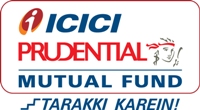The Holy Grail of Investing: Diversification

Take a look at your neighborhood grocery shop or departmental store and did you notice the wide range of products belonging to different categories of toiletries, bakery items, and food items? The reason behind this is simple - they want to cater to different customers and don't want to lose any customer.
The grocery store is trying to minimize the overall “risk” of losing business or profits. This same principle is what is required when an investor invests money in achieving his/her financial goals.
You should avoid investing in a single asset and better “Diversify”!
What is diversification?
Investors should consider diversification which is the means of keeping a complete assortment of assets from available broad categories like stocks, bond and cash to achieve a solid portfolio performance.
The main objective and rationale behind doing so is to create portfolio mix of a variety of investments for superior performance and also to get into risk-management technique.
Financial advisors help investors single out and allocate investments across various financial instruments like shares, mutual funds, gold or bonds and fixed income instruments. This process is also termed as “Asset Allocation”.
By diversification, an investor achieves two objectives: risk reduction and maximizing returns. There are times when diversification helps to lower the impact of market volatility.
In short, we can define asset allocation as the process of breaking the investment portfolio among various asset classes, evaluate or decide the mix of assets based on your unique financial goals, keeping a balance between risk and returns acceptable to you and above all, performing all these within your time horizons.
You must read – How to achieve financial goals through right asset allocation
Why diversification?
So the question is why you should diversify. For instance, you invest all your funds in a single stock or mutual fund scheme and consider the value of the stock or mutual fund scheme fall by 50%, which makes you lose 50% of your portfolio!
While on the other hand, when you invest the same fund in three different stocks or say three – four separate mutual fund schemes, you will reduce or eliminate the chances of losing so heavily.
Still you can make-up the loss from another stock or mutual fund scheme you have invested in if one goes down by 50%.
Did you know how to get more returns from your mutual fund investments
The following rationale will help you to understand the need to diversify:
Markets are unpredictable:
It is almost impossible to predict the market movements. The portfolio performance is greatly affected by the volatility of market. In short-term, there are less chances of precisely chalking-out best-performing investment instrument. Therefore, it becomes even more important to spread the investments across various assets to spread the risk.
Related read: Asset allocation and market cycles
You always have a cushion:
In case of diversification, an investor will always be left with some assets which will be performing and give you good returns. Hence, you can keep a balance and reduce the losses in cases of market slowdown, economic downturns, global recession or domestic recession.
Explore beyond home grounds:
There are other reasons to diversify since when you diversify, you come out of “home country bias”. Your focus gets shifted to various other sectors, industries, and even global markets instead of becoming an investor who is lured only to the domestic markets. One positive aspect of this is that you come out of your comfort zones, which reduce the possibilities of loss due to domestic, global or industry slowdowns.
Awaiting opportunities:
Thousands of possibilities open up with diversification. As an investor, diversification may expose you to increased risks, but at the same time, it increases your return earning potentials.
Points to keep in mind while diversifying
An investor must keep the following in mind owing to the different ways one can diversify while investing:
Minimum mix:
It is important to have a minimum mix of three different asset classes namely- stocks or mutual funds, bonds, and cash. Financial Experts will be able to help you with planning the mix or even you can strategize yourself keeping in mind the goals and time as desired by you.
Keep it simple:
Another important point is to keep the diversification as simple as possible and precise like investing in low-cost index funds.
Did you know how you can follow – Simple asset allocation strategies for different risk profiles
Be aware of fees:
An investor should be aware of fees or expense ratio while investing in mutual funds or index funds. Never lose track of all such fees to avoid miscalculating the earnings. Basic research on this subject is necessary since lower the fee, the higher is the net investment and thus the returns.
Your capital must be divided into:
Growth assets:
Investors will benefit from long-term capital gains and may include investments like-shares or property. It is important to keep in mind that growth assets have high risks and hence must be weighed against your risk tolerance.
Defensive assets:
Usually these assets are lower in risks but provide lower returns on long-term. The assets include cash or fixed interest.
Within asset class:
You may even try diversifying within the same asset class by investing across different industry sectors.
Domestic stocks:
These stocks can deliver higher growth over the long term and are considered the most aggressive part of your portfolio. However, don't forget that they also hold the highest risks.
Bonds:
If you want cushioning from the unpredictable highs and lows of stocks, you must invest in bonds. You will benefit from regular interest income and reduced risk factor.
Multiple fund managers:
You can take the help of more than one fund manager while diversifying. Different approaches to investing can be considered that will have greater chances of maximizing your returns.
You must read – Mutual funds that you must have in your portfolio
The disadvantages of not diversifying
Primarily, there are two kinds of risk faced by investors when investing- Systematic risk and Unsystematic risk. Systematic risk is caused due to political instability, sudden natural hazards,inflation rates, or war while Unsystematic risk can be due to industry changes,specific company performance, market conditions, or economy.
One cannot control Systematic risks but unsystematic risks are controllable by diversification. Financial and business risks are the common sources of unsystematic risk and you must perform diversification to reap the benefits and control the risks.
Advantages of diversification
The following are the advantages of diversification:
Reduce the risk:
Experts believe that concentrating all your investment in one asset class will expose you to complete risk. However, the risk can be reduced by allocating the same fund in various assets that will even help to deliver better returns with reduced potential losses.
Keeping capital intact:
People who don’t have age on their sides and have lower risk tolerance can always benefit from diversification to keep their capital intact.
Assurance of returns:
Performance is not predictable when investing only in one asset and this may not give you desired returns too. However, you may get the desired returns when you invest with multiple assets.
Possible drawback
There are two sides to every coin and like-wise there is also a catch in diversification apart from many benefits. The whole process of diversification may even diminish your portfolio’s overall growth. Let us understand this by an example.
If you have invested in single stock, and the stock rose by 20%, then your entire portfolio increases by 20%. Hence, you will earn Rs. 20,000 if you have invested Rs. 100,000.
However, when you diversify the same amount, say 50% each in stocks and cash, then you will earn you Rs. 10,000 only (if there is no change in cash value). Hence, the process may well decrease your overall earning. Therefore, it is important to select the right diversification mode when you need to evaluate the earning and the risk profile of the asset.
However, in case you are risk averse, you must understand your risk capacity
Conclusion
Many researches suggest that 88% portfolio performance depends on asset allocation.
As an investor, it is critical to diversify and invest in a variety of asset classes in order to lessen the potential losses by investing your capital in a single asset. An investor can select different investment styles over the same period while diversifying and generate different performance results.
Investors should understand that the inherent diversification can change over time and the portfolio requires a total attention from the investor's end once a balanced portfolio is set up. Remember, a balanced portfolio is only possible by investments that do not perform in the same way or produce the same returns, and investors should vary the risk in the securities held in different asset classes.Happy investing!
Mutual Fund Investments are subject to market risk, read all scheme related documents carefully.
RECOMMENDED READS
LATEST ARTICLES
- Why you need to have hybrid mutual funds in your portfolio: Different types of funds Part 2
- Why you need to have hybrid mutual funds in your portfolio: Misconceptions Part 1
- Which is the best time to invest in mutual funds
- Economic slowdown: Is it real and what should you do
- Importance of liquidity in investing: Mutual funds are ideal solutions
An Investor Education Initiative by ICICI Prudential Mutual Fund to help you make informed investment decisions.
Quick Links
Follow ICICI Pru MF
More About ICICI Pru MF
POST A QUERY




